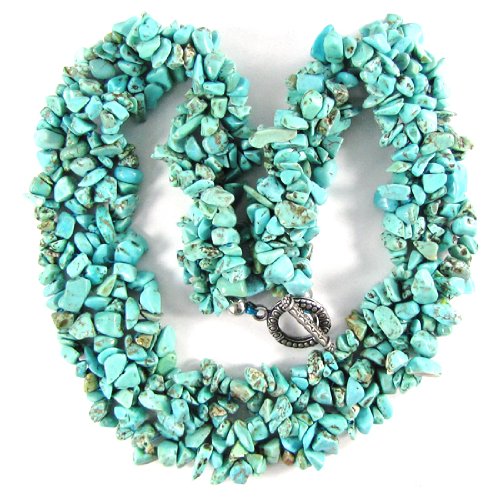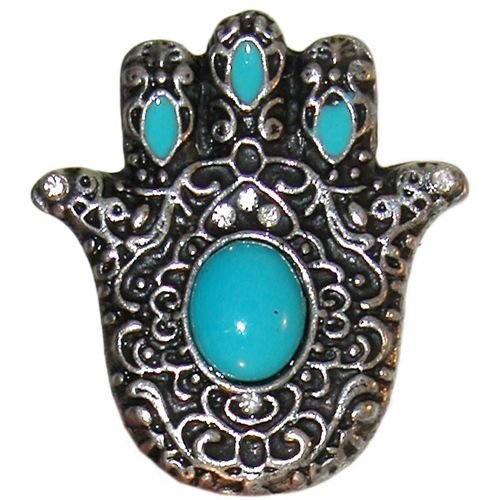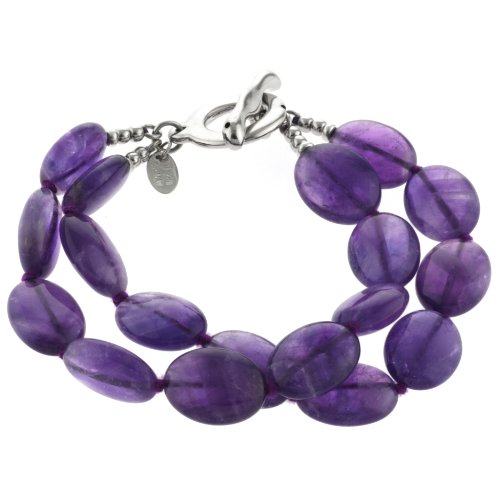Circulation Colours turquoise from Rey mysterio 619 video house colours circulation techno house blacksitedown
Keywords:
My Links : The Bests Rings
My Links : The Bests Rings

Prices as of : Oct 31, 2012 01:45:03
Listprice : $35.00
Offier Price : $35.00 
You Save :


Friends Link : The Bests Rings
Turquoise, the lovely gemstone that is used in silver turquoise jewelry. It has been used for attractive purposes for many thousands of years and is well known as the gemstone used in the curious jewelry made by Native Americans. Intense blue turquoise is the most very prized, but is much rarer than green stones. Some blue stones also fade to green over time as they are exposed to sunlight.
The blue color of the stones comes from copper oxide which is gift in trace amounts in this aluminum phosphate crystal. Other colors, such as yellow, may be gift which arises from traces of zinc and green which comes from iron. The wide array of colors of natural turquoise comes from separate combination's of these elements. The blue color of some high quality stones, such as Persian turquoise does not fade and remains intense indefinitely.
Some gemstones have a major color with the face marked by a spider web pattern of lines of separate colors. The lines are caused by uneven dispersal of the assorted elements gift in the high-priced stone and the lines might be yellow, black or brown in many patterns. However unmarked gems are more valued than those with a spider web matrix while turquoise high-priced stones of a deep blue color, even though they have a spider web matrix, are more valued than yellow or green pure gemstones. Natural turquoise gems of a pure color, that is without a spider web matrix, are much rarer and are very very valued.
Turquoise Treatments
Less than 10% of the turquoise used in jewelry is natural, finest quality gemstone. Over 90% is treated from rough turquoise to make it hard adequate to be used. The process also improves resilience and enhances the gem's color. Turquoise mined in a whole of countries, i.e. China, is all the time too soft and needs to be treated. In spite of this the procedure yields beautiful gems, which, although less needful than unprocessed stones, nevertheless make astounding jewelry.
These procedures improve the color of the gemstones as well as production them tougher which makes them last longer. A procedure that can be used to boost the color consists of injecting a dye in epoxy resin into the stone. The color is durable and will not fade. The soft Chinese turquoise is hardened by injecting liquid plastic into the stone. A supplementary coming is to inject epoxy resin without a dye that will stabilise the gem but will not convert the color.
Imitation turquoise is also made from powdered turquoise that has been mixed with a plastic binder. This kind of turquoise is plainly very uncostly and virtually worthless. These imitation stones are often sold fraudulently as high quality natural turquoise turquoise and are often waxed or plastic coated.
Looking After Turquoise Stones
Turquoise is both soft and porous so must be looked after carefully. It shouldn't be worn at times when scratching can be occur and ought to be protected from blows always. Never wear turquoise jewelry for gardening or to do the washing up! Put away turquoise jewelry in a box lined with soft material such as velvet and do not store with other, harder gems which may maybe scratch the gems.
Turquoise gems can absorb liquids so keep them away from oils, chemicals or hot water and even cosmetics and perfumes. These could be absorbed by the stone which may dull or even convert it's color. You can clean turquoise with very mild soapy water and then drying thoroughly with a soft cloth. Make sure it is dried thoroughly before you store it away and on no account use an ultrasonic cleaner as they may consequent in cracking of the stone.
In Conclusion
This lovely blue gemstone is rare and very prized. Although it needs to be looked after determined and kept away from sunlight to prevent the color from changing it looks astounding when made into silver turquoise jewelry. The beautiful blue color of the stones is perfectly complimented by silver and suits any skin tone. You will wear your jewelry with pride for many years to come.
Turquoise - A gorgeous Stone Used in Silver JewelryRecommend : The Bests Rings
See Also : The Bests Rings
Summer weddings call for fascinating and festive colors and accents. Sometimes you can take your cue from current fashions and come up with some great inspirations. One of the freshest looks for weddings this year is the very approved turquoise and lime green combination.
Turquoise and lime green are fascinating and bold colors, but they are also surprisingly versatile as a wedding color scheme. Depending on the exact shades that you choose, these colors can be beachy, preppy, 1960s mod, or thoroughly contemporary. Not too many other color palettes can make that claim! One of the things that makes lime green and turquoise work so well together is that they have a similar intensity and depth of color. You can generate some actually fascinating optical effects, especially with pattern.
Once you have decided on the normal feeling that you would like for your wedding, it is time to start getting into the details that will make your foresight become a reality. For instance, let's say that you are having a wedding by the ocean, how would you go about using a turquoise and lime color palette? With the bridesmaid dresses, for starters. Photo crisp turquoise organza dresses edged with a lime green organza border at the hem. They would look magnificent against the blue of the water and the sky.
If you love the idea of a 1960s look for your wedding, pick a great mod print to use in your décor. Big graphic flowers or pop art circles would be fantastic. You can use your popular pattern on all things from table linens to the invitations. Just be sure that the bridesmaids don't end up looking like they are wearing tablecloths; keep whether the linens or the dresses more muted so that they do not blend together.
You can also use shades of lime green and turquoise to generate a very chic environment for your wedding. One of the top trends for bridesmaids right now is flowing chiffon dresses. This style would be even more striking when created from an ombre chiffon that is dyed to flow from one color into the other. an additional one idea is to have your attendants wear chiffon dresses that have an accent color peeking out from under the main hue.
Turquoise and lime green can be used to found magnificent centerpieces. Fill tall cylinders will real limes, fill with water, and then top with a floral arrangement. There is a wider array of green flowers ready than you may think, ranging from romantic green hydrangeas to exotic green orchids. These incorporate beautifully with white flowers, and the green and white centerpieces will actually pop against turquoise linens in whether a pattern or a solid.
The bride will actually want to get in on the fun of such delightful colors. Your bridal accessories, such as shoes, jewelry, and wraps are great ways to add a touch of color to a white wedding gown. A small accent will actually stand out against a white dress, so you don't have to do too much to generate a dramatic effect. A seaboard of white pearls with a scattering of turquoise and lime crystals would be fresh and pretty for a summer wedding. If you want to keep your dash of color under wraps, opt for a sassy pair of strappy sandals that will peek out when you are on the dance floor.
Great wedding designs begin with great color choices. Turquoise and lime green are undoubtedly colors that say fun and festive, which makes them terrific for a summer wedding. Use them throughout your wedding to generate an event that will be bold, eclectic, and original.
A Turquoise and Lime Green WeddingMy Links : The Bests Rings
My Links : The Bests Rings

Prices as of : Oct 26, 2012 13:45:03
Listprice :
Offier Price : 
You Save :


My Links : The Bests Rings

Prices as of : Oct 25, 2012 12:45:03
Listprice : $5.00
Offier Price : $1.99 
You Save : $3.01


Friends Link : The Bests Rings

Prices as of : Oct 24, 2012 21:00:05
Listprice : $30.00
Offier Price : $9.99 
You Save : $20.01


Friends Link : The Bests Rings
For thousands of years the old Persians exported Turquoise to the world, it was hugely favorite and to this day query is still massive, so huge is this query that a worldwide commerce has advanced not just to mine it, but to imitate and reproduce it as well.
The Turquoise Gemstone is the legal stone for December and is also used to celebrate five years of marriage. Originally Persia (Iran) was the most important source of Turquoise but is now virtually mined out; good sources of the stone are Afghanistan, Australia, Brazil, Chile, China, Mexico, Russia, Tanzania and Turkestan. The very best material at the moment comes from the Sleeping attractiveness mine in Arizona.
The color of Turquoise can range from a deep blue to blue/green a dark greeny blue to a yellowy green. Impurities present in the Gemstone give the Turquoise it's coloring, copper is responsible for it's blue toning while iron gives the stone a green tint.
Persian Turquoise was less porous than most material mined today so was less treatable meaning you purchased natural, untreated Gemstones. Turquoise from the Sleeping attractiveness mines are any way very porous and are often soaked in a resin or coated with wax to stop the material from crumbling, as well as enhancing it's overall look and coloring, this treatment is known as stabilized Turquoise.
Dyeing or staining Turquoise is someone else way to enhance the materials color, oil, paraffin and copper salt will enhance the stones color and luster but are only temporary solutions, treatments of this kind result in what is known as enhanced Turquoise.
Natural Turquoise can be quite expensive and it is for this hypothesize many different imitations exist on the market today. Glass imitation Turquoise has been nearby since Victorian times and can be hard to distinguish from natural Turquoise, sometimes you can get lucky and see air bubbles near the covering which can give it away. Enamel has also been used to imitate Turquoise but has a much greater luster than the former material.
The Turquoise Gemstone has long been believed to be a magical stone that connects spiritual awareness and develops inner drive and calm. Turquoise has always been worn as a natural safety against the powers of darkness, even now it is used as the protective stone of pilots and air crews and many other occupations deemed as high risk.
The North American Indians still yield a great deal of former silver jewelry using Turquoise, and believe that the Gemstone opens up a relationship between the sky and the sea.
The Navajo Indians have had a long love affair with turquoise or skystone as they refer to the gem, believing that wearing the stone offers them good fortune. Some spiritual ceremonies are held where turquoise is cast into a river to help bring rainwater to their lands. old manuscripts from Persia narrative that the health of a someone wearing Turquoise can be assessed by the variations in the color of the stone. It is also believed Turquoise heals the emotions and enhances communication and creativity.
Turquoise is the national Gemstone of Iran (Persia) and is used for the garnish of thrones. Montezuma's treasure, which is on display in the British Museum, includes a astonishing carved serpent that is covered by a mosaic of Turquoise.
Turquoise has a hardness of 5-6 on the Moh scale, with a conchoidal fracture that means it is a fragile stone that can crumble, and scratch very easily. Unlike other Gemstones, Turquoise can darken and turn slightly green with age. Because of it's porosity the stone can lose it's color if it comes into feel with detergents, grease or perspiration.
If you wear a Turquoise ring, it should always be removed before washing your hands and perspiration should be cleaned off gently with water.
Turquoise Jewelry should always be stored in a cool, dark box in acid free tissue paper, away from other Jewelry that may cause it damage.
Turquoise - The Holy StoneRecommend : The Bests Rings
Recommend : The Bests Rings
Friends Link : The Bests Rings

Prices as of : Oct 21, 2012 06:45:04
Listprice : $13.99
Offier Price : $5.00 
You Save : $8.99


Tags : The Bests Rings

Prices as of : Oct 20, 2012 02:15:04
Listprice :
Offier Price : 
You Save :


Related : The Bests Rings
My Links : The Bests Rings
Thanks To : The Bests Rings
Turquoise jewellery symbolises a range of ideas some of which are base across the world and some of which are unique to confident cultures. This description offers an understanding into the separate meanings of these beautiful stones nearby the world.
Quick History Lesson
Turquoise is plan to have been first discovered by the aged Egyptians nearby 4,000-5,000 B.C and seems to have been mined in the Tibetan region of China for approximately as long. However, it first hit Europe through Turkey's trade routes. In fact the word 'turquoise' means 'Turkish' in French.
Turquoise jewellery in South-East Asia
The citizen of Tibet have all the time valued the turquoise gemstone extremely and it is oftentimes used in their jewellery. If it has not been treated then turquoise will often convert its colour. This symbolises the circle of life from birth to death in Tibetan people's eyes.
Traditionally in South-East Asia, turquoise was believed to furnish security to horses and the horsemen riding them.
Turquoise jewellery in Europe
A silver turquoise ring was traditionally given to brides in Russia as it was plan to bring peace to women and good condition and prosperity to men.
Turquoise jewellery in the Middle East
Persians often wore pearls with a turquoise stone in the middle as it was believed to focus the mind in prayer and was used to wish upon.
Turquoise jewellery in America
Native Americans believed turquoise would bring rest to the dead and was used to make carvings, usually of animals, which were then put into graves and tombs. The Native Americans' reasoning behind this trust was that turquoise was a mix of the green colour of the earth and blue colour of the heavenly sky and therefore it would attract good spirits.
Native American archers would also attach turquoise stones to their bows as they believed it would aid them in shooting targets accurately.
Turquoise jewellery across all regions and cultures
In many cultures it is traditional to give a close friend or house member turquoise as a gift because it is said to symbolise one's affection for another. It is also believed to protect the friend or house member from negative energy. Turquoise's ability to bring security and prosperity to its wearer are base themes to many cultures. Turquoise also has religious meaning as an contribution and is oftentimes used in fetish carvings.
The colour of turquoise is believed to intensify feelings of creativity and expression rather than analytical thought. The colour is also supposed to bring feelings of happiness because it reflects the blueness of the sky and the greenness of the sea.
Please succeed this link for more data and pictures about turquoise jewellery on my blog.
The Meaning and Symbolism of Turquoise JewelleryFriends Link : The Bests Rings
Thanks To : The Bests Rings
Turquoise is possibly the most valuable, non-transparent mineral used in jewelry. It has been mined since at least 6000 Bc by Egyptians. Like other opaque such as coral, turquoise is ordinarily sold by the size in millimeters rather than by weight.
Turquoise is normally found sandstone layers and can be seen as splotches or as a network of brown or black veins running through the sandstone. There are many small-scale mining operations that are worked by hand. Only one mine in Apache Canyon California operates at a commercial capacity today.
With a hardness of just under 6, about the hardness of window glass, this gemstone takes a good polish. It comes in white, blue, green, brown, yellow and all of the shades in between. The value of the turquoise you will find is considered by the richness of color. Robin's egg is normally the most valuable. The more of a green hug or lightening of color will decrease the value. Turquoise should never be soft or chalky in color.
Turquoise is typically found in the arid regions of the world and some high quality gemstones have been found in the Southwest United States such as Arizona, California, Colorado, New Mexico and Nevada.
More that 120 mines have produced requisite quantities of gem quality turquoise in Nevada. Nevada mines are primarily worked for the gemstone as apposed to other mining areas where turquoise is normally the succeed of the by product of other mining activities. The geological formation of Nevada turquoise, it is hard and dense and normally does not wish any rehabilitation or enhancements to be used in jewelry.
The Royston mining district located near Tonapah, Nevada conducts tours of the mining facility Wednesday through Saturday excluding holidays. For 0 per man you will get a pail to fill up by picking through the tailing piles. You will need to bring gloves, hat, sunscreen, water, and a good pair of shoes.
The mines in Royston have been in performance since 1902 and by 1915 over ,000,000 worth of turquoise has been removed from the mines. It was believed to have been the largest single producing turquoise mine in America at that time.
The Otteson's Mine also offers mine tours, Wednesday through Friday excluding holidays. For per man you will get a pail to fill up by picking through the tailing piles.
Turquoise is found throughout the Southwest United States. always experience the states Bureau of Land supervision for any fees or permit requirements before treasure hunting on communal land. Also get permission from any land owners before hunting on incommunicable property.
In Arizona turquoise has been found near Albuquerque, Bisbee, Cave Creek, Globe, Kingman, Turquoise and Birdeyes mountains.
In California turquoise has been found in San Bernardo, Imperial, and Inyo counties.
In Colorado, hunt Conejos, Lake, El Paso and Saguache Counties.
In Nevada, hunt Clark, Elko, Esmeralda County, Eureka, Lander, Mineral County and Nye counties.
New Mexico, Eddy, Grant, Otero, and Santa Fe counties.
Tools you will need to hunt for turquoise; Pick Axe, rock hammer, gloves, protection glasses, bucket. Remember you are searching arid regions of the world so proper clothing is a must. Wear clothing in layers because weather can change very rapidly in these areas. Water, hat and a good sunscreen is a must.
Happy Treasure Hunting.
Treasure Hunting For TurquoiseTags : The Bests Rings
My Links : The Bests Rings
Visit : The Bests Rings
While colors can date a room, they can also make it look very contemporary. One color combination that has gained tremendously popularity is brown and turquoise. While the color palette may sound contemporary and bold, it can also be muted and organic depending on how you accent the space. So, reconsider a bathroom with brown and turquoise floor tile and all of the possibilities that it offers.
There is Brown and then There is Brown
A wonderfully neutral and organic color, brown can be a exquisite wall color to showcase this beautiful color combination in the tile. For a larger bathroom you can go with a rich, chocolate brown and accessorize in a lighter brown. Chrome fixtures will repeat the silver in the mirror, or pottery fixtures could be used to echo the color of the tub. If your bathroom is smaller you may opt for a lighter tone in your brown wall color with a single accent wall in chocolate brown. To pull the turquoise into the room you have the option of picking up the color in your towels and shower curtain, or you can add a fun cabinet or stool to the room and paint it turquoise.
Contrast and Repetition
If you do not necessarily want to showcase the floor, then you can pull these two contrasting colors throughout the room. For example, you may choose to paint a focal wall brown on the upper half and a shiny turquoise on the bottom. Then paint the remaining walls a pale blue with brown stenciling for border designs. You can pull both colors in straight through towels, shower curtains and accessories. Since these colors are also organic think about using brown branches in a large turquoise vase, brown pebbles in a turquoise bowl or brown and turquoise beads in a glass bowl.
Retro is In
Turquoise is a exquisite example of how all old is new again. While turquoise can offer a very contemporary aesthetic, it can also illicit a retro vibe when combined with colors like burnt orange, mustard yellow and avocado green. You can tie all of the colors together by selecting a shower curtain or area rug that contains them all. If you have sufficient counter space you can embellish with retro accessories like a lava lamp. Fun, geometric shapes throughout your accessories together with lighting fixtures and wall art will halt off the look.
Accentuate the Warmth
If you are worried about your bathroom not having a warm feel to it, instead of accentuating the cool turquoise tones, you can play off of the earthier brown colors. By pairing a warm red or orange with the brown, you can beyond doubt make the turquoise recede into the background. By having natural wood in your window and door frames, you add an organic and warm feel to the room. With soft warm lighting and luxurious warm tones in your towels and rug the room will feel animated and cozy. Then you can equilibrium the turquoise in the floor tile by adding a small turquoise vase or candle, and your bathroom will be warm, cozy and balanced.
Related : The Bests Rings
Friends Link : The Bests Rings

Prices as of : Oct 08, 2012 02:30:05
Listprice :
Offier Price : 
You Save :


Tags : The Bests Rings
Turquoise is a stone customary and valued since 3000 B.C.E. Old Egyptians, Persians, and Pre-Columbian Native Americans used it to make jewelry, mosaics, and carved it into many dissimilar shapes. The stone was unknown in Europe until the 14th century, when it was introduced by Turkish merchants. It is plan that the name of the stone was derived from the French word turc, which means Turk in English. This lead to the idea that the stone itself was mined by the Turks in their homeland. This is not true. The Turks were only merchants that dealt in the stone.
Rich deposits of turquoise mined in Old times were placed in Persia (modern day Iran), and some of the top ability turquoise is still being mined there today. The stone is also found in Northern Africa, Australia, Siberia, and the American South West.
The Sacred Stone
Turquoise has been a sacred stone for many cultures. The Aztecs combined it with gold in ceremonial items. Some cultures believed that if a horse rider wore the stone it would safe them from falling off. It is a stone credited with bringing happiness and security from accidents of all kinds, and with many other attributes. The stone is also plan to be one of the stones that make up the breastplate worn by Aaron in the book of Exodus of the bible. This breastplate had twelve gemstones on it, each one engraved with the name of one of the twelve tribes of Israel. Some scholars believe that turquoise was one of these stones.
The sacredness of turquoise for Native Americans goes back before recorded time. It was carved into the shape of birds and animals. Some tribes put these carved items into tombs to help guard the dead and attract good spirits. The Shaman used turquoise for healing. Warriors attached the stone to the ends of their bows, for it was plan to ensure definite arrow shots.
Although robin egg blue is the most customary and most extremely valued color for the stone, it can be sky blue, varied shades of blue-green, to greenish gray. It is not all the time a solid color, and can have gradations of color within individual stones. Some stones have veins of other material running straight through them.
A very high ability turquoise can be expensive, but there are many beautiful stones ready at a reasonable price. While this stone has been used and appreciated by royalty and the rich straight through the ages, it has also been ready and appreciated by citizen in more common circumstances. And it remains the same to this day. A stone for all who appreciate its beauty, and its afford-ability. It is indeed The People's Stone.
Turquoise - The People's StoneTags : The Bests Rings
Prices as of : Oct 05, 2012 03:00:04
Listprice :
Offier Price : 
You Save :


See Also : The Bests Rings
My Links : The Bests Rings
Turquoise is as beloved today as it was when it was first discovered. It is probably the most important non transparent mineral used for making jewelry. Found in separate countries nearby the world it has been mined since the time of the early Egyptians. The finest turquoise has been found in Iran and mines in the southwestern United States.
When Native Americans discovered it in the United States, they considered it to be the highest and most valued thing in the world. Some Native Americans believed turquoise had medical and protective powers.
There are many separate types of turquoise and the most important has extra characteristics. When the stone is mined it is plainly hard, colorful and usually brightly colored blue or green. It is easy to cut and polish, a lot like marble and stone, without any treatment. Keen blue is probably the most desired color and has the highest value but it is the quality of color that determines the value regardless of the actual color. One small nugget of turquoise often has a range of hues from blue to green.
The other minerals that are found nearby and within the turquoise are what give the natural stone its collection of color and texture. Turquoise is truly destroyed by heat, by fracture, and frequently by discoloration due to various causes, from oils to bleaching chemicals or even to exposure, when mined, to the air and sun.
Turquoise is used mostly in jewelry, and jewels come and go with styles in dress and fashion. Among more primitive groups that use the same ornaments over long periods of time for primary jewelry and clothes turquoise is still the adored gem. The gems and materials used for their jewelry and clothing are also easy to find locally.
Treated or stabilized turquoise is used approximately totally for beads today. The cost of shaping, grist and polishing natural beads from virgin and classic grade turquoise is quite expensive.
Native Americans of the Southwest United States consider coral to be the perfect complement to turquoise. They also consider coral to have the same medical and protective powers as turquoise. There are some Native American tribes that prefer the red-orange colors of coral. For women of the Navajo culture, strands of coral beads symbolize success and public standing. By her thirteenth birthday a navajo woman will have at least ten strands of beads and the most prized necklace would be one of coral and turquoise. These necklaces are symbols of the many dances she has attended and show her popularity and status among the other women.
Turquoise spent years in the shadow of other gems like jade but has once again become very popular. The Southwest Native Americans never lost interest in turquoise, but the larger national jewelry shop neglected it for a long time.
Turquoise - The favorite Stone For handmade Native American JewelryRecommend : The Bests Rings
Turquoise has been known for thousands of years and is the one of the earliest used gem stones. The formation of this gemstone depends on weathering and the ingredients of the earth's crust. The formation of turquoise depends on the proximity of copper ions and hence it is found only in or near to copper deposits. It is the hydrous hydrate of aluminum, phosphorus and copper. Some of the finest specimens are mined in Iran, although their attractiveness is not rivaled by products from mines in the Southwestern Us.
Most turquoise mined today has a high porosity and a low density. In fact, in many ways it resembles chalk. To increase its hardness as well as to heighten the color, turquoise is treated by adding a clear resin. This process of infusing the turquoise with a clear resin is called stabilization. Resin fills the tiny holes and crevices of the soft turquoise to form a stabilized stone. Stabilized turquoise is submerged in to a stabilizing compound, mostly an epoxy resin. The capillary performance of the porous stone absorbs the stabilizing compound in to the stone. After the absorption of stabilizing compound, the stone is dried. After drying the turquoise, it can be cut, drilled and prepared for making any jewelry. Any turquoise that is stabilized with dyed resin is known as treated turquoise. Treated turquoise is less costly than natural or stabilized turquoise. Newer approaches involve pressure infusion to fill the hardening clarification deep in to the pores to make the turquoise more amenable to making jewelry.
Natural turquoise has a tendency to change its color as it reacts with the oils in the skin. The stabilized turquoise does not change its color even if it is worn next to the skin because the pores in the stone are sealed with the stabilizing compound. Stabilized turquoise is as beautiful and desirable as natural turquoise but is less costly than natural turquoise.
Stabilization of turquoise not only protects the stone from dirt but also reduces the chances of breaking. Stabilization is better than waxing and oiling because it won't allow the materials from within the stone to leak over time which creates an outer white deposit. Stabilization of turquoise is often considerable because of the paucity of gem-quality natural turquoise. The stabilization process also provides an opportunity to add color to the stone while the epoxy resin infusion process. Stabilization is a permanent clarification for pores. In summary, stabilization increases the hardness and vigor of the turquoise specimen, and allows the jewelry to cut and polish the stone of a smoother and more sparkling finish.
The Benefits of Stabilizing TurquoiseThanks To : The Bests Rings
Turquoise is a hydrated copper aluminum phosphate [CuAl6(Po4)4(Oh)8*5(H2O)] and gets its blue-green hues from its copper content. It has been used as a gemstone for jewelry and decorative purposes for thousands of years. The origin of the word is not exactly known, other than the fact that the word has its origins in French. The name probably comes from French translations of either Turkish (Turquois) or dark-blue stone (pierre turquin). The best grades of this gemstone come from Iran, though they are rivaled by specimens from the Southwestern United States. Turquoise has been mined and used for jewelry and decorative purposes for at least 6,000 years, it has been devalued in up-to-date times by the introduction of imitations, synthetics, and treatments. It is often the stone of selection for fashion jewelry together with silver turquoise pendants. The stone in its natural form as described is too high-priced for fashion jewelry. However, a good stabilization process is makes it potential for artisans in the Southwest to make their famed jewelry.
Even the finest grades of this gemstone in its have state have low hardness, high porosity, and low density. So untreated the untreated gem will suck up oils from the skin, and other liquids, and can turn in color with time. In some respects, this moderately changing color with use adds to the charm and allure of the natural form of the gem. Only the finest gem-quality stone is of enough hardness so that it can be cut, polished, and used as a pendant or ring or earrings. Only a small fraction of this stone in the world (probably less than 5 percent) is of this high quality. The vast majority of turquoise is too soft and too porous to be used directly as gemstone. The natural stone is infused with a clear resin, improving its hardness, reducing its porosity, and allows polishing to a high shine. Once treated, the gem is cut, shaped, polished, and installed in metal settings to generate beautiful pendants, earrings, and other pieces of fashion jewelry. Most of the turquoise on the market today is stabilized. A dye is sometimes added to the resin to turn its color.
Reconstituted gemstone is also ready on the market, and is probably the cheapest form. Chips, fragments, and poor potential stone are ground to a powder, mixed with resin, and molded into blocks. Once the blocks harden, items of jewelry are then carved out from this block. The dark spider veins so characteristic of the natural gem are conspicuously absent from the reconstituted version.
Imitation or fake turquoise is very pervasive in today's jewelry market, and is one of the key reasons for the devaluation of natural turquoise. The most tasteless imitation is howlite, although other fakes can also be found. Howlite is a porous form of calcite or chalk that can be colored and treated with epoxy resin, and made to look very similar to the genuine item. Treated and dyed howlite is often being sold as the genuine item today, especially from online sources based in Asia. Buyers are cautioned to ask questions before investing money with unknown sellers.
Turquoise - History, Tradition, and Its Use in Today's Fashion JewelryRecommend : The Bests Rings